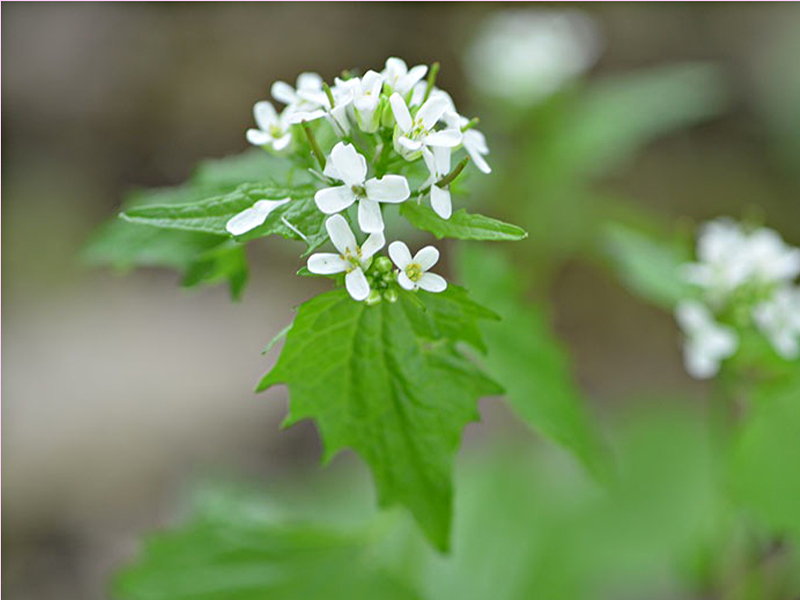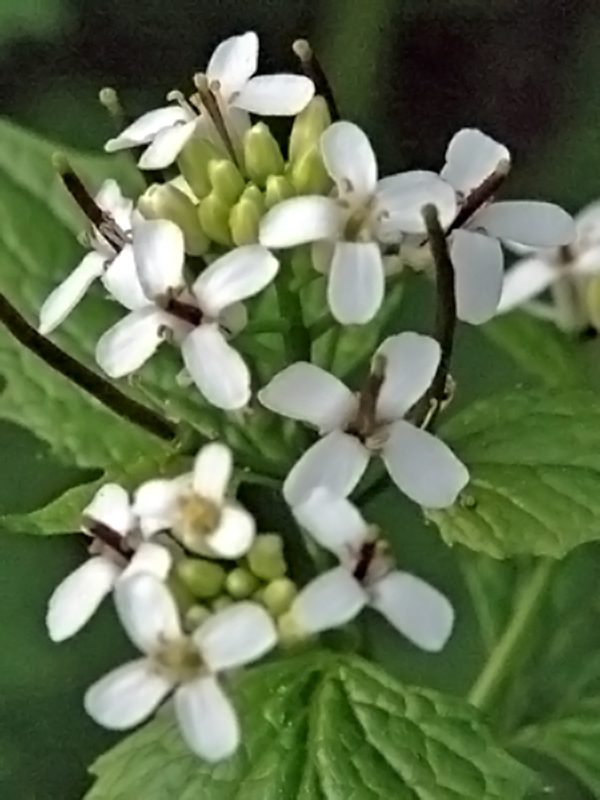Alliaria petiolata (Garlic Mustard)
Michael's Opinion
A biennial invasive plant that is rapidly becoming a problem in woodland areas where it out-competes native flora. Purported to be alleopathic.
Botanical Information
| Family | Brassicaceae |
| Genus | Alliaria |
| Species | petiolata |
| Synonyms | Alliaria officinalis |
| Category | Wildflowers & Weeds |
| Origin | Native to northwestern Africa, western and central Asia, and Europe. |
Details
| USDA Hardiness Zone | 1a - 6a |
| USDA Hardiness Ref. | |
| Canadian Hardiness Zone | 0a - 5b |
| Canada Hardiness Ref. | |
| RHS Hardiness Zone | H7 |
| RHS Hardiness Ref. | |
| Temperature (°C) | -51 - (-21) |
| Temperature (°F) | -60 - (-5) |
| Height | 30 - 100 cm |
| Growth | Fast |
| Flowering Period | May, June |
Description and Growing Information
| Notable Specimens | Joany’s Woods, West Williams, Middlesex County, Ontario, Canada. |
| Leaf Description | The leaves are stalked, triangular to heart-shaped, 10-15 cm long (of which about half being the petiole) and 5-9 cm broad, with a coarsely toothed margin. |
| Flower Description | The flowers are produced in spring and summer in button-like clusters. Each small flower has four white petals 4-8 mm long and 2-3 mm broad, arranged in a cross shape. |
| Fruit Description | The fruit is an erect, slender, four-sided pod 4-5 cm long, called a silique, green maturing pale grey-brown, containing two rows of small shiny black seeds which are released when the pod splits open. |


